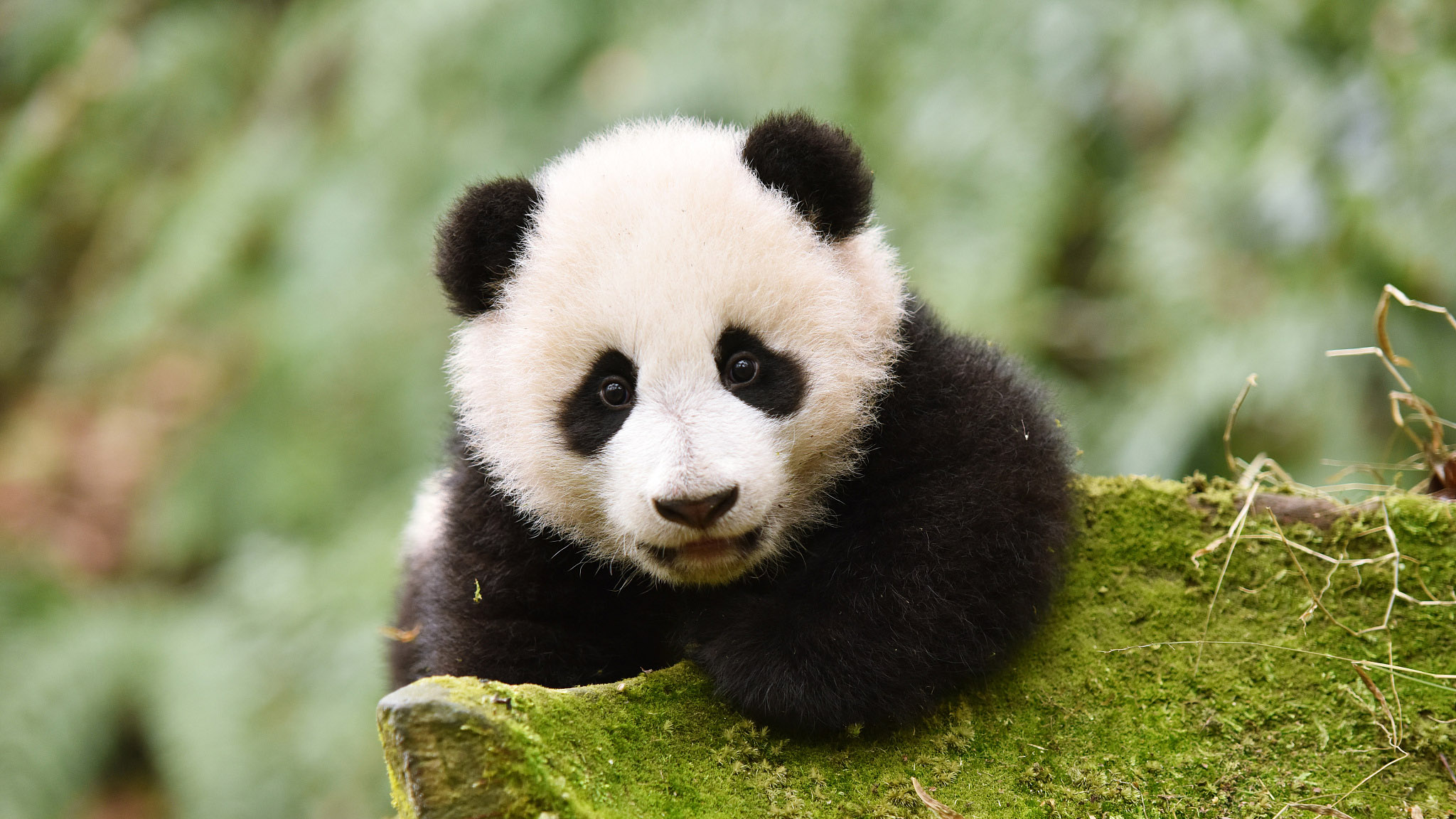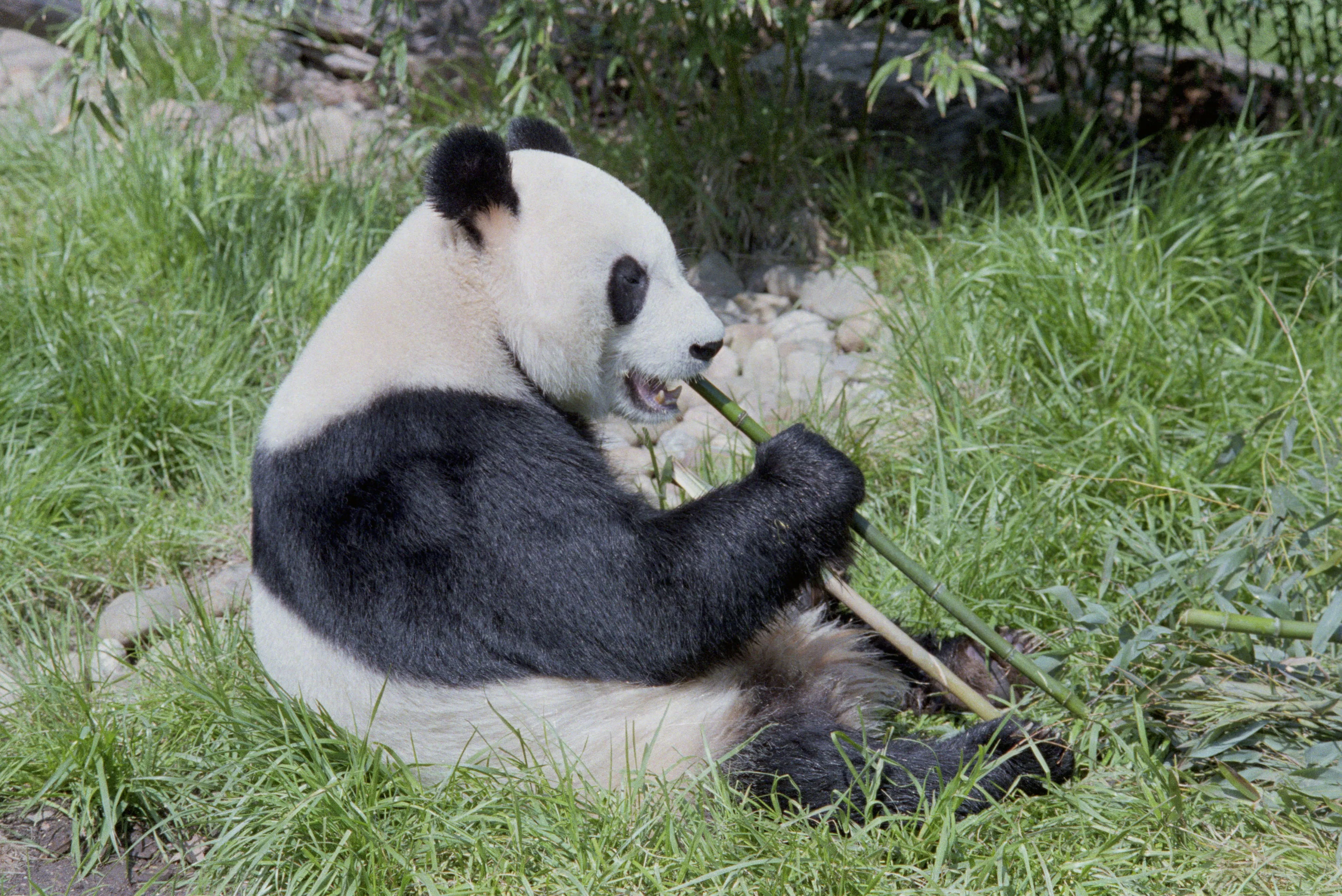





 Pandas live mainly in temperate forests high in the mountains of southwest China, where they subsist almost entirely on bamboo |
 Pandas mostly eat bamboo, but are also known to eat bulbs, grasses, some insects, and fruit. |

|
For a long time, scientists weren't sure if giant pandas were bears or perhaps more closely related to raccoons. Now we know that giant pandas are indeed members of the bear family, similar to other bears in their general looks and the way they walk and climb. Giant pandas have unusually thick and heavy bones for their size, but they are also very flexible and like to do somersaults.
Bamboo is the most important plant in a giant panda's life. They spend at least 12 hours each day eating bamboo. Pandas grasp bamboo stalks with their five fingers and a special wristbone. They use their teeth to peel off the tough outer layers of the stalk to reveal the soft inner tissue.
The cub's eyes open at 50 to 60 days of age, and by 10 weeks the cub begins to crawl. Its teeth appear by the time it is 14 weeks old, and mother and cub spend much less time using their den. By 21 weeks, the cub is able to walk pretty well.